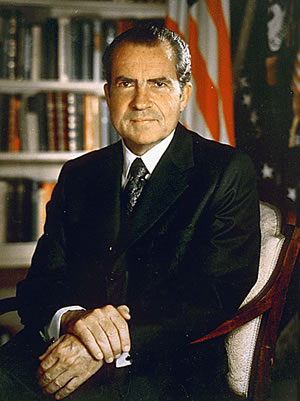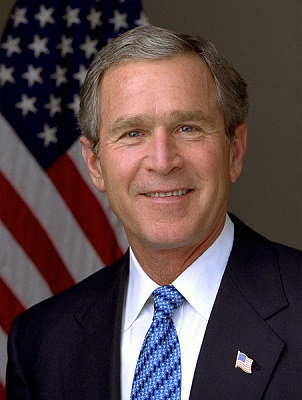 |
|
 |
Abortion was first raised as a presidential campaign issue in 1968. Before then, no major party candidates addressed the issue and no one asked their opinions of it. Abortion was illegal throughout the United States and no one was seriously presenting a major challenge to those laws.
If one were to ask an adult U.S. citizen before the mid-1960s if they supported abortion, the answer would have resembled a similarly worded question today on legal cannibalism. It was abhorrent and a non-discussable. No one would seriously entertain the notion of making it legal for a woman to intentionally kill the baby that was developing in her womb.
The only major countries in the world at that time that were known for having legal abortion were communist nations like the Soviet Union and Communist China. But, as their leaders (Stalin, Mao) were also known to have caused the deaths of tens of millions of innocent post-birth citizens, it was to be expected. It was a different world than the decent, moral United States.
Then, things in America changed. The “new” leftists, many of them atheists, many of them educated (primarily at the college and university level) by true believers in other left wing causes, e.g. anti-wars that involved fighting communists, anti-big business, pro-Marxism. They, in turn, spawned a new generation of leftist professors, ultra-liberal media kingpins, and extreme left politicians at all levels of government.
In the presidential election of 1968, abortion became an issue because a few states had liberalized their abortion laws, while activists in some others were pushing for changes. It was much like the situation in the early years of the 21st century on the subject of assisted-suicide. It was kept at a state level. Even those politicians that discussed the issue were usually quick to categorize it as a “state issue”––not something that was relevant to a presidential campaign.
In the 1960s and 1970s, it was difficult for even the most discerning voter to find candidate positions on secondary issues. This was long before the advent of the Internet and you needed to find a newspaper article that covered an issue or you tried to “catch” a candidate speech on television or radio––and this was a decade before video recorders. And again, most candidates did not go out of their way to touch issues like abortion.
Even with this lack of accessibly to information, inquisitive voters could determine that Robert Kennedy and Hubert Humphry were supporters of legal abortion whereas Richard Nixon probably was not. But with a guy like Nixon, who knew? If you were a high-information pro-life voter in 1968, you probably voted for Nixon. The situation was much the same four years later when pro-abortion Democrat George McGovern opposed Nixon in the 1972 presidential election.
In perhaps the great irony in the political history of abortion in the United States, Nixon was the president most responsible for the 5 to 4 Roe v. Wade U.S. Supreme Court decision that legalized abortion in all 50 states for virtually any reason at almost any time in any woman’s pregnancy. In his five and one-half years in office, he appointed four justices, of which three were part of the five justice majority who voted for legal abortion in Roe v. Wade. If even one of these three, had been vetted by Nixon to determine his pro-abortion stance and replaced by a pro-life person, Roe would never have passed. It would instead have been five justices against abortion and four in favor of abortion.
After Nixon resigned in 1974, Gerald Ford ascended to the presidency. His pro-life position was somewhat more liberal than most Republicans, who advocated a Constitutional amendment to overturn the Roe court decision. Ford proposed the Constitution be modified to throw the issue back to the states, so that states that wanted liberal laws could have them; those that didn’t wouldn’t. Pro-lifers weren’t happy with this position, but it was certainly better in the election year of 1976 than Democrat Jimmy Carter, who, while touting his old-time religion, came down firmly in favor of letting Roe v. Wade stand as the law of the land. Carter won and the Democratic Party began a pro-choice, AKA pro-abortion, litmus test for national (President and Vice President) candidates that has existed ever since.
Note: the last pro-life Democratic candidate for either of these two highest offices in the country was Sargent Shriver who ran as McGovern’s running mate in 1972. Apparently, it was the last time the party felt that it needed to balance the ticket on the issue. For the next 44 years, only pro-abortion politicians were allowed to run for president or vice-president in the Democratic Party, and in 2016 no pro-life candidates are in sight who might deviate from this rule.
The election year of 1980 was a better one for pro-life people: the pro-life Republican candidate, Ronald Reagan, defeated pro-abortion Jimmy Carter. Things appeared to be looking up for the pro-life movement although many people remembered that Reagan had signed a pre-Roe pro-abortion law when he was governor of California. Still, when he became president he addressed the annual pro-life march in front of the White House that took place every January 22nd––the anniversary of Roe v. Wade. Although he never attended in person, but spoke from his office via outdoor speakers, it was far better than Carter, who ignored the annual march.
The Democratic presidential candidate in the next election was pro-abortion Walter Mondale, Carter’s vice president in the 70s. He was soundly defeated by Reagan as pro-lifers cheered. There was nothing for them on the Mondale ticket---his running mate was the pro-abortion New York liberal, Geraldine Ferraro
Reagan’s two terms were a mixed bag for pro-lifers. He supported Congregational action to eliminate any U.S. support for abortion in other counties, and he gave lip service to a Constitutional amendment, the holy grail of the pro-life movement at the time. On the other hand, Reagan’s choice of Supreme Court justices left much to be desired. While one nominee, Antonin Scalia, turned out to be one of the most reliably pro-life justices in history, the other two---Anthony Kennedy and Sandra Day O'Connor---were so pro-abortion that they voted in the majority on the Planned Parenthood v. Casey in 1992---a decision which could have undone the Roe decision.
Several years ago, the writer of this article spoke with the late Dr. John Willke, who in the beginning of the abortion movement in the 1960s and 1970s was the leading pro-life voice in the United States. He told me that he and other top pro-life leaders tried to persuade Reagan of the pro-abortion leanings of O’Connor, but Reagan, for some reason, refused to listen. His mind was made up and they could get nowhere.
Just like with Nixon, Ronald Reagan could have created a different outcome by selecting pro-life justices. If these two Reagan appointees had voted pro-life on the Planned Parenthood case, it would have been an historic defeat for abortion. Justices Scalia, Rehnquist, White, and Thomas dissented in Planned Parenthood v. Casey. If they were joined by EITHER Kennedy or O'Connor, the decision would have been reversed. Of course the fault does not lie solely with Reagan---not a single Senator voted against confirming either O'Connor or Kennedy; the confirmation votes were 99-0 and 97-0, respectively.
In 1988, Reagan, with two term completed, was ineligible to run again, so his pro-life vice president ran. George H. W. Bush wasn’t always so pro-life. In fact when he contested the 1980 Republican presidential nomination with Reagan, one of the latter’s arguments was that he was more pro-life than Bush, and, indeed, his words seemed to prove that out. Now, by the time of the 1988 election, Bush’s position on abortion appeared to be as solidly pro-life as Reagan’s. Opposing Bush was pro-abortion Michael Dukakis with equally pro-abortion Lloyd Bentsen as his vice presidential running mate. Bush won.
In his single term in office, Bush appointed two Supreme Court Justices: David Souter and Clarence Thomas. Souter was pro-abortion. If Souter had been better vented and a pro-lifer chosen the Planned Parenthood decision would have gone the other way even with the pro-abortion Reagan appointees. But it didn’t. The vote for Souter was 90–9. Remarkably, extreme pro-abortion Democratic senators Ted Kennedy and John Kerry voted against him! They though he was a right-winger! It shows that even liberal senators can be fooled. By the way, the word “Souter” has gone down as meaning an appointee who is other than he seems.
The 1990s brought pro-abortion Democrat Bill Clinton wins in 1992 and 1996. He was opposed by, respectively the Republican pro-life teams of George H. W. Bush-Dan Quayle and Bob Dole–Jack Kemp. In 1992, Clinton won because a bizarre third party candidate named Ross Perot garnished almost 19% of the vote, taking most of it from Bush. In 1996 Ross Perot took over 8% of the vote and when that’s combined with the poor performance of the lackluster GOP candidate, Bob Dole, Clinton was able to squeak by with a reelection victory. The main impact of the Clinton administration on the right to life was his appointment of two Supreme Court justices: Ruth Bader Ginsburg and Stephen Breyer. Both turned out to be reliable pro-abortion votes on any and all cases that came before the court.
The situation was reversed in 2000 when Bush’s pro-life son, George W. Bush, beat the 100% pro-abortion Democratic ticket of Clinton’s VP Al Gore and Connecticut Senator Joe Lieberman. In a 2004 replay, the Bush ticket triumphed over the 100% pro-abortion team of John Kerry and John Edwards. However, more than any other Republican candidate in the past 50 years, Bush made good on his pro-life promises: he appointed John Roberts and Samuel Alito, two reliable pro-life votes, who joined Scalia and Thomas as pro-life champions.
The elections of 2008 and 2012 saw the pendulum swing in the opposite direction again as Barack Obama and Joseph Biden beat pro-lifers John McCain (moderately pro-life, that is) and Sarah Palin (one of the most dedicated pro-life candidates in years) in 2008 and pro-lifers Mitt Romney and Paul Ryan in 2012. Obama proved to be the most pro-abortion president in the history of the United States and, true to form, appointed two staunch proponents of free and easy abortions for any reason, right up to the moment of birth: Sonia Sotomayor and Elena Kagan.
With the benefit of the experience of the past one half century, how will pro-life people evaluate the Republican and Democratic candidates of 2016? Will the Democrats chose another ticket with two 100% pro-abortion candidates? That’s the easy question. The answer without a shadow of doubt is: yes, absolutely.
Will the Republicans choose someone who will say they are pro-life, but will appoint Supreme Court candidates that are pro-abortion like Nixon, Reagan, and the first George Bush did? Or will they select someone like George W. Bush, who appointed only pro-life justices?